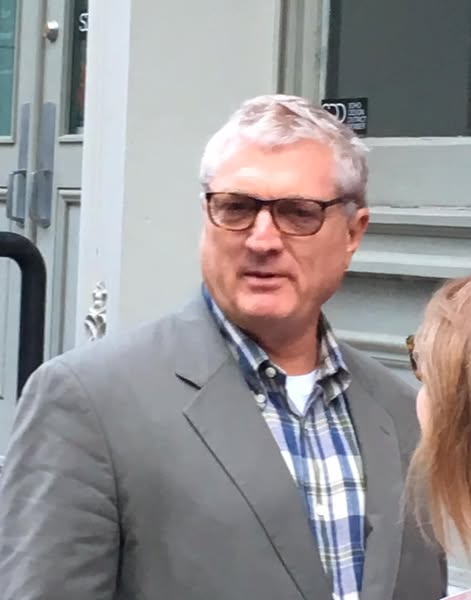Walter Robinson New York Obituary, The art world is mourning the loss of Walter Robinson, a celebrated painter, writer, editor, and co-founder of Art-Rite who passed away in 2025 at the age of 75. His impact on contemporary art, criticism, and publishing spanned over five decades, shaping the way audiences and fellow artists engaged with visual culture. His work as a painter, editor, and critic left an indelible mark on the landscape of American art, making his passing an immense loss for the creative community.
Walter Robinson’s journey into the art world began in the 1970s when he emerged as both an artist and a writer, engaging in the vibrant and often rebellious New York art scene. He was one of the key figures who helped document and define the movements of the era, including the rise of postmodernism, Neo-Pop, and appropriation art. His keen eye and intellectual approach to art criticism allowed him to shape discussions that would resonate for years to come.
One of his most significant contributions was as a co-founder of Art-Rite, an independent and avant-garde art publication that provided a platform for emerging voices in contemporary art. Alongside his collaborator Edit deAk, Robinson created a space where alternative and experimental art could be discussed, critiqued, and celebrated without the constraints of mainstream media. Art-Rite became a crucial publication for young artists and writers, offering them a place to engage with the artistic movements of the time.
While many knew Robinson primarily as an art writer and critic, he was first and foremost an artist. His paintings, often characterized by bold, striking imagery influenced by pop culture and advertising, explored themes of consumerism, romance, and desire. His style drew inspiration from the visual language of mass media, blending it with a painterly touch that made his work both accessible and thought-provoking.
Throughout his career, he exhibited his paintings widely, gaining recognition for his ability to infuse humor and social commentary into his work. His art captured the spirit of the times, reflecting on the way images and messages shape everyday life. Despite his deep involvement in criticism and writing, he never stopped painting, maintaining multiple studios where he continued to produce an impressive body of work.
Robinson’s influence extended into the digital age as he became the founding editor of Artnet Magazine, the first online publication dedicated to art news and criticism. From 1996 to 2012, he led the magazine, helping to establish the internet as a vital platform for art discourse. Under his leadership, Artnet provided coverage of exhibitions, market trends, and cultural commentary that reached a global audience. His ability to balance sharp criticism with a sense of playfulness made his writing stand out, earning him a loyal readership.
His tenure at Artnet marked a shift in how art journalism was consumed, proving that online platforms could offer the same depth and insight as traditional print publications. By embracing the digital format early on, Robinson helped pave the way for the current landscape of online art writing.
Beyond his professional accomplishments, Robinson was a generous mentor to young artists, writers, and critics. His willingness to engage in conversations about art, offer feedback, and support emerging talent made him a beloved figure in the community. He had an infectious enthusiasm for creative expression, always encouraging those around him to think critically and push boundaries.
His friendships with fellow artists, writers, and curators were built on mutual respect and admiration. Those who had the privilege of visiting his studios were often struck by his relentless energy and passion for painting. He was a storyteller at heart, both in his writing and in personal conversations, making every interaction with him memorable.
One of Robinson’s last public appearances was at a panel discussion on the East Village Eye at the Jefferson Market branch of the New York Public Library. It was a fitting setting for someone who had spent his life documenting and analyzing the ever-evolving art scene. His insights and observations during the discussion reminded everyone of his deep knowledge and unique perspective on art and culture.
Walter Robinson’s legacy is one of curiosity, intellect, and creativity. His work as an artist, writer, and editor contributed to a broader understanding of contemporary art, and his influence will continue to be felt for years to come. His paintings remain powerful reflections of American visual culture, and his writings serve as an important historical record of the movements and figures that shaped modern art.
He leaves behind not just a body of work but a community of artists, writers, and thinkers who were inspired by his vision. His wife, Lisa Rosen, and his family, along with countless friends and colleagues, now carry forward his memory, cherishing the impact he had on their lives and the world of art.
The loss of Walter Robinson is deeply felt, but his spirit lives on in the art he created, the words he wrote, and the people he inspired. His contributions to the art world will never be forgotten, and his influence will continue to guide future generations of artists and critics.
Rest in peace, Walter Robinson. Your voice, your art, and your vision will remain a vital part of the cultural landscape you helped shape.
